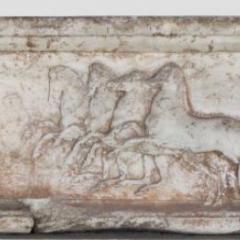Jon Piccini, The University of Queensland
Human rights have been a hot topic of late. The Australian Human Rights Commission president, Gillian Triggs, has been accused of politicising her position, while The Australian newspaper and conservative politicians have led a campaign against Section 18C of the Racial Discrimination Act.
Why has Australia’s long commitment to human rights bodies and legislation suddenly become such an issue? After all, the Human Rights Commission celebrates what amounts to its 35th anniversary this year, and Section 18C has been on the books for more than 20 years.
Answering these questions involves in part looking at Australia’s previous reception of human rights. Contrary to federal minister Christopher Pyne’s recent suggestion that Triggs “stay out of politics and stick with human rights”, Australia’s historic engagement with human rights norms has always been informed by the politics and prejudices of the day.
Human rights in history
Although Australia was one of eight nations that drafted the 1948 Universal Declaration of Human Rights, it was slow to embrace these principles domestically.
Commenting on the impending 15th anniversary of the declaration in 1963, one department of external affairs bureaucrat pronounced himself a “sceptic” about such commemoration. A “routine press release” would suffice, at least “while we have discriminatory racial laws in the states and a racial immigration policy”.
Talking up human rights, it was feared, might draw unwanted attention to Australia’s less-than-stellar record. Equally, the declaration lacked enforceable agreements to back up human rights. As the surprisingly forthright external affairs minister, Paul Hasluck, put it at a Human Rights Year gathering in 1968, it was a document “that a nation would not mind having quoted against itself”.
This changed in the 1970s. The Whitlam government signed the twin covenants associated with the declaration in 1972, but was unable to make significant further progress. Only the Racial Discrimination Act passed before the government’s dismissal. In March 1976, enough nations had ratified the twin covenants to make them enforceable and, as such, a matter of urgency for the new Fraser government.
This was a time of global momentum in human rights. Amnesty International received the Nobel Peace Prize in 1977 and US President Jimmy Carter began talking of their centrality to a post-Vietnam foreign policy.
In 1978, the 30-year anniversary of the Universal Declaration of Human Rights, the Fraser government embarked on a large-scale commemorative project and proposed a human rights commission as a significant step towards Australia’s ratification of the covenants.
Creating the commission
The Whitlam government had proposed a human rights bill in 1973, which floundered in a debate about interference in state matters – particularly concerning Indigenous Australians.
From 1976 onward, the Fraser government took steps down a similar path, yet the bill’s failure to pass until 1981 highlighted the strength of debate. While everyone professed to support inalienable human rights, the definition was not at all certain, and they became a political football.
One of the biggest issues that slowed the bill’s passage was how to define the Universal Declaration of Human Rights’ “right to life”. A woman’s right to terminate a pregnancy – then and now subject to various restrictive state laws – was a big issue in Australia at the time. Anti-abortion groups sought to appropriate rights to their agenda.
In 1974, one Methodist minister remarked that the proposed bill “allows a person to be deprived of their life if it be according to the law”. Such concerns were the main reason for the bill’s lengthy stay in parliament.
In 1980, an amendment was made to the proposed bill to include “the rights of the unborn child”. While this appeased an anti-abortion majority in the lower house, it stalled in a hostile Senate.
This is just one example of the political scuffles that dogged the early operations of the commission. It was launched on December 10, 1981, and replaced in 1986 by the Human Rights and Equal Opportunity Commission. The topics of debate ranged from the rights of the family to socially constructed gender norms. Drawing distinctions between “politics” and “human rights” didn’t make sense then, and certainly doesn’t now.
Words that wound
The Racial Hatred Act inserted Section 18C into the Racial Discrimination Act. But its core principles had been the topic of fierce discussion for decades.
Conservative pressure had led to a similar provision being deleted from the original legislation in 1975. However, a late 1970s rise in hate groups and fascist violence sparked renewed demands for laws to deal with “racist propaganda”.
The commission sponsored a conference titled “Words that Wound” in 1982, where a remarkable range of opinions echoed those of today.
Participants did not express a desire to trample freedom of speech, even at a time when 55% of Australians were polled as opposing a multicultural Australia. Instead, they wanted simply to control the flow of racist publications. These often encouraged violence and, as then commissioner Dame Roma Mitchell put it, were “perhaps the most hurtful barb” a minority group could receive.
The same issues that court conservative animosity today stirred passions among progressives in the 1980s. A representative of the Greek-Australian community forcefully defended “a right that is most precious to us – our freedom to express ourselves”. The chairman of the Association for Immigration Reform also cautioned that such laws could well be used against Indigenous activists campaigning for a treaty with white Australia.
Such concerns were also in the minds of those drafting the legislation. The result was that our current laws give ample protections for free speech, with only the most egregious cases prosecuted.
Equally, though, recent findings that one-third of young Australians face racial discrimination raise questions over whether the Racial Discrimination Act’s topical treatments of racist outbursts is enough to deal with a broad, systemic problem.
Historicising both the Australian Human Rights Commission’s foundation and initial debates about legislative limitations on hate speech demonstrates that human rights have never been above politics. Equally, questions of freedom of expression were as much on the lips of past proponents of these laws as their contemporary detractors.
![]()
Jon Piccini, UQ Research Fellow, School of Historical and Philosophical Inquiry, The University of Queensland
This article was originally published on The Conversation. Read the original article.



